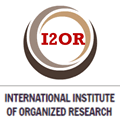Utilización de medios diagnóstico en pacientes con retinosis pigmentaria y glaucoma
Palabras clave:
retinosis pigmentaria, glaucoma, tomografía de coherencia óptica, campo visualResumen
Introducción: la retinosis pigmentaria y el glaucoma constituyen un desafío científico por su progresión variable y compleja. Objetivo: demostrar el aprovechamiento de medios diagnósticos para el estudio y seguimiento del paciente con ambas enfermedades. Método: investigación descriptiva, retrospectiva, serie de casos entre 2015-2019 en el Centro de Referencia de Retinosis Pigmentaria, La Habana. Se revisaron la base de datos e historias oftalmológicas de 138 enfermos y 49 conformaron la muestra al cumplir los criterios de inclusión. Los medios utilizados marcaron las variables: agudeza visual corregida, tonometría, gonioscopía, perimetría y tomografía. Resultados: tienen entre 40-60 años el 48,9% y antecedentes familiares de glaucoma sin retinosis pigmentaria el 26,5%, 30 con visión corregida mayor de 0,6 y el 34,7% campo visual mayor de 15°. En 78 ojos (79,6%) hay ángulo abierto y el glaucoma apareció 3,2 años después del debut de la ceguera nocturna. El grosor promedio de la capa de fibras neurorretiniana fue menor de 86 micras en 64 ojos (65,3%). El volumen del anillo y el índice vertical excavación/disco disminuidos, son los parámetros más afectados con el daño glaucomatoso. La sensibilidad retiniana disminuyó sobre todo en el cuadrante nasal superior, áreas de la retina relacionadas con el glaucoma. Conclusiones: el mejor aprovechamiento de medios diagnósticos en la atención a pacientes con retinosis pigmentaria y glaucoma, propuesto y realizado por licenciados, acrecienta las habilidades profesionales y conocimientos sobre estas enfermedades, aún no resueltas por la comunidad científica mundial.
Descargas
Citas
2. European Glaucoma Society Terminology and Guidelines for Glaucoma. Supported by the EGS Foundation. Br J Ophthalmol. 2017 Jun; 101(6): 130–195.
3. Wang M, Lin HT, Bai YJ, Ge J, Zhuo YH. Clinical evidence in concurrence of retinitis pigmentosa and glaucoma. Chin Med J. 2011; 124:1270–1274.
4. Badeeb O, Trope G, Musarella M. Primary angle closure glaucoma and retinitis pigmentosa. Acta Ophthalmol 1993; 71(6):727-32.
5. Herrera M. Clasificación. Cap. V. En: Peláez O. Retinosis Pigmentaria. Experiencia cubana. La Habana: Editorial Científico Técnica; 1997. p. 61-81
6. García Espinosa SM, Freyre Luque R, Castillo Vázquez C, Navarro Scott M, Dager Salomón M. Consideraciones oftalmológicas y genéticas sobre la asociación de retinosis pigmentaria con glaucoma. MEDISAN [Internet] 2007 [cited 2019 13 de marzo 2019] ;11 (2) Available from: http://bvs.sld.cu/revistas/san/vol11_2_07/san08207r.htm
7. Triana Casado I, Molina Cisneros C, González Poveda, Crespo Surí M. Caracterización clínico epidemiológica de pacientes con retinosis pigmentaria y glaucoma. MEDISAN [Internet] 2011 [cited 2019 24 de abril]; 15(5):604 Available from: http://bvs.sld.cu/revistas/san/vol_15_5_11/sansu511.htmlTriana
8. Triana Casado I, Molina Cisneros C, Lugo Santos N, Ambrós Gómez I. Caracterización de las principales variables clínicas del glaucoma en pacientes con retinosis pigmentaria. MEDISAN [Internet] 2012 [cited 2019 21 de junio]; 16(1) Available from: http://bvs.sld.cu/revistas/san/vol_16_1_12/sansu112.htmlTriana
9. American Academy of Ophtalmology. Glaucoma (Basic and clinical Science Course 2014-2015). San Francisco: Estados Unidos Academy of Ophthalmology; 2015. [cited 2020 2 de enero] Available from: htpp://www.aao.org
10. Marco Yu, Chen Lin, Weinreb RN, Lai G, Chiu V. Risk of Visual Field Progression in Glaucoma Patients with Progressive Retinal Nerve Fiber Layer Thinning. A 5-Year Prospective Study Ophthalmology. 2016; 123 Suppl 6: S1201-1210
11. Fernández Argones L, Fumero González FY, González Díaz RE, García Gutiérrez CA. Tomografía de coherencia óptica de dominio espectral en el diagnóstico y seguimiento del glaucoma. Tema 15. Sección III Glaucoma. En: Río Torres M y cols. Oftalmología. Diagnóstico y tratamiento. La Habana Ed. Ciencias Médicas. 2018. p 161-164
12. Mendoza Santiesteban CE, Santiesteban Freixas R, González García A, González Hess Perdomo Trujillo Y, Alemañy Rubio, Eguía F, Vidal Casalís S. La tomografía de coherencia óptica en el diagnóstico de enfermedades de la retina y el nervio óptico. Rev cubana Oftalmol [Internet] jul.-dic 2005 [cited 2019 5 de diciembre]; 18(2) Available from: http://www.bvs.infomed.sld.cu
13. González Gómez JC. Hernández Hecheverría O. Relación del complejo de células ganglionares y función visual en la neuropatía óptica isquémica anterior no arterítica. Revista Cubana de Oftalmología. [Internet] 2019 [cited 2019 23 de marzo];32(4) e733 Available from: http://www.revoftalmologia.sld.cu/index.php/oftalmologia/article/view/733/pdf_28)
14. Manual Stratus Tomógrafo Retiniano de Coherencia Óptica. [Internet] 2018 mayo [cited 2019 12 de diciembre] United States Available from: www.tecnologiados.com/productos/zeiss/documents/STRATUS.pdf
15. Bowling B. Glaucoma.Cap.10. En: Kanski, editors. Oftalmología Clínica. Un enfoque sistemático 8va.Edición. España: Elsevier Inc.; 2016. p 307-331
16. Leung CK, Cheung CY, Lin D, Pang CP, Lam DSC, Weinreb RN. Longitudinal variability of optic disc and retinal nerve fiber layer measurements. Invest Ophthalmol Vis Sci. 2008;49(11):4886-4892
17. Azañero Inope CA. Tomografia de coherencia optica. [Internet] [update 2019
4 de marzo, cited 2020 23 de enero] Available from: http://www.slideshare.net/azanero33/tomografia-de-coherencia-optica-11666271
18. Rebolleda G, Diez-Álvarez L, Casado A, Sánchez-Sánchez C, de Dompablo E, González-López JJ, et al. OCT: New perspectives in neuro-ophthalmology. Saudi J Ophthalmol.2015;29(1):9-25
19. Manual Campímetro Octopus 101 SERNEW 100 [Internet] mayo 2016 [cited 2019 23 de marzo]. United States Available from: https://es.scribd.com/document/312395730/Campimetro-Octopus-101-SERNEW100Técnica perimetría
20. Fernández Argones l, Fumero González FY, Trujillo Sánchez M. Tema 16. Campo visual en el diagnóstico y seguimiento del glaucoma. Sección III. Glaucoma. En: Río Torres M, Fernández Argones L, Hernández Silva JR, Ramos López M. Oftalmología. Diagnóstico y tratamiento. La Habana: Ed. Ciencias Médicas.2018 p 166-169
21. Fumero González FY, Cárdenas Chacón D, Fernández Argones L, Tema 2 Glaucoma primario de ángulo abierto. Sección III. Glaucoma En: Río Torres M, Fernández Argones L, Hernández Silva JR, Ramos López M. Oftalmología. Diagnóstico y tratamiento. La Habana Ed. Ciencias Médicas. 2018 p 108-110
22. Radhakrishnan S, Chen PP, Junk AK, Nouri-Mahdavi K, Chen TC. Laser Peripheral Iridotomy in Primary Angle Closure. Ophthalmology [Internet] 2018 February 23 [cited 2020 3 de febrero]; 110(3): [aprox.15p.] Available from: http://www.aaojournal.org/article/S0161-6420(18)30108-8/full text
23. Zhang Q. Retinitis Pigmentosa: Progress and Perspective. [ review article] Asia Pac J Ophthalmol 2016;5: 265–271
24. Peng T, Wu L, Zhou W. Retinitis pigmentosa asociated with glaucoma. Clinical analysis. Eye Sci. 1990; 6 (1-2): 17-18
25. Yu-Chieh Ko, Chia-Jen Liu, De-Kuang Hwang, Tzeng-Ji Chen, Catherine J. Liu. Increased Risk of Acute Angle Closure in Retinitis Pigmentosa: A Population-Based Case-Control Study. PLoS ONE [Internet] 2014 [cited 2019 3 de febrero]; 9(9): e107660. Available from: http://dx.doi.org/10.1371/journal.pone.0107660
26. Oishi A, Ogino K, Nakagawa S, Makiyama Y, Kurimoto M, Otani A. Yoshimura N. Longitudinal analysis of the peripapillary retinal nerve fiber layer thinning in patients with retinitis pigmentosa. Eye. 2013; 27: 597–604.
27. Michelessi M, Lucenteforte E, Oddone F, Brazzelli M, Parravano M, Franchi S, Ng SM, Virgili G. Optic nerve head and fibre layer imaging for diagnosing glaucoma. Cochrane Database of Systematic Reviews [Internet] 2015 November 30 [cited 2020 12 de enero]; Suppl 11. Art. No. CD008803. DOI: 10.1002/14651858.CD008803.pub2/full/es
28. Arzuaga E, Piloto I, Fumero F, Cárdenas D, Domínguez M, Batista M. Uso clínico del tomógrafo de coherencia óptica Spectralis en la evaluación del glaucoma. Rev Cub Oftalm. [Internet] 2017 [cited 2019 30 enero];30 (4) Available from:http://revoftalmologia.sld.cu/index.php/oftalmologia/article/view/316_
29. Mwanza J.C., Budenz DL. Optical coherence tomography platforms and parameters for glaucoma diagnosis and progression. Curr Opin Ophthalmol. 2016 Mar;27(2):102-103.
30. Juvier Riesgo T, Hernández Echeverría O, Aguilera Palacios GA. Distrofias de retina. Tema 2. Sección VII En: Río Torres M, Fernández Argones L, Hernández Silva JR, Ramos López M. Oftalmología. Diagnóstico y tratamiento. La Habana: Ed. Ciencias Médicas.2018. p.372-375
31. Bowling B. Distrofias hereditarias del fondo de ojo.Cap.15 En: Kanski editors Oftalmología Clínica. Un enfoque sistemático. 8va.Edición. España: Elsevier Inc.; 2016. p 646-651
32. Vázquez LE, Monsalve P. Avances en la detección y seguimiento de cambios glaucomatosos del nervio óptico. Procedente de Conferencia en XXXVIII Curso Interamericano de Oftalmología. Oct-Nov 2016; Miami, Estados Unidos [Internet] [cited 2019 25 de marzo] Available from: http://.www.cursointeramericanodeoftalmologia.com
33. Arzuaga Hernández E. Piloto Díaz I, Fumero González FY, Batista Peña M, Domínguez Randulfe M, Obret Mendive I. Artefactos en la tomografía de coherencia óptica de dominio espectral en el glaucoma. Revista Cubana de Oftalmología. 2019;32(4) e799 Disponible en: http://www.revoftalmologia.sld.cu/index.php/oftalmologia/article/view/799/pdf_30
34. Fernández Argones L, Fumero González FY, Trujillo Sánchez M Tema 16. Campo visual en el diagnóstico y seguimiento del glaucoma. Sección III. Glaucoma En: Río Torres M, Fernández Argones L, Hernández Silva JR, Ramos López M. Oftalmología. Diagnóstico y tratamiento. La Habana Ed. Ciencias Médicas. 2018.p 166-169
35. Pastor Jimeno JC. Afectación del campo visual en la baja visión Sección I Cap 3 Manual de Baja Visión y Rehabilitación Visual. En: Coco Martín MB. México, DF: Editorial Médica Panamericana 2015. p 17-27
36. Grover S, Fishman GA, Anderson RJ, Alexander KR, Derlacki DJ. Rate of Visual Field Loss in Retinitis Pigmentosa. Ophthalmology. 1997 March; 104 Suppl 3: S460–465
37. Massof RW, Finkelstein D. A two-stage hypothesis for the natural course of retinitis pigmentosa. Adv Biosci. 1987; 62:29–58.
38. Berson EL, Sandberg MA, Rosner B, Birch DG, Hanson AH. Natural course of retinitis pigmentosa over a three-year interval. Am J Ophthalmol. 1985;99(3):240–51
39. Kuang TM, Zhang C, Zangwill LM, Weinreb RN, Medeiros FA. Estimating lead time gained by optical coherence tomography in detecting glaucoma before development of visual field defects. Ophthalmology. 2015; 122:2002–2009.
40. Smith HB, Chandra A, Zambarakji H. Grading severity in retinitis pigmentosa using clinical assessment, visual acuity, perimetry and optical coherence tomography. Int Ophthalmol. [Internet] 2013 Jun [cited 2019 30 de abril];33(3):237-44. Available from: http://link.springer.com/content/pdf/10.1007%2Fs10792-012-9678-2.pdf
Descargas
Publicado
Cómo citar
Número
Sección
URN
Licencia
Aquellos autores/as que tengan publicaciones con esta revista, aceptan los términos siguientes:
Los autores/as conservarán sus derechos de autor y garantizarán a la revista el derecho de primera publicación de su obra, el cual estará bajo una Licencia de Creative Commons Reconocimiento-NoComercial 4.0 Internacional (CC BY-NC 4.0) que permite el uso de la obra para compartir (copiar y redistribuir el material en cualquier medio o formato) y adaptar (remezclar, transformar y construir a partir del material) siempre y cuando se haga mención a la publicación en la revista como fuente primaria. Sin embargo, no podrá comercializar con ella.
Los autores/as podrán adoptar otros acuerdos de licencia no exclusiva de distribución de la versión de la obra publicada (p. ej.: depositarla en un archivo telemático institucional o servidores preprint) siempre que se indique la publicación inicial en esta revista.
La Revista Cubana de Tecnología de la Salud está autorizada por una Licencia de Creative Commons Reconocimiento-NoComercial 4.0 Internacional.




